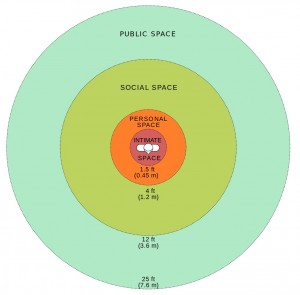In the field of somatic psychology, nonverbal communication is a key element. Nonverbal communication is the ability to read and understand people’s nonverbal signals. Have you heard the phrase “actions speak louder then words”? Well, it’s true! 60 – 70% of our communication is nonverbal while only 30 – 40 % make up the verbal component. That’s why we sometimes don’t trust someone even if their words are saying “trust me”.
 In EMDR Therapy, the therapist needs to become aware of the client’s nonverbal communication as well as their own. Is there a congruency between what is being said and what the body is communicating? When clients feel a congruency between the behaviors of the therapist and what they are saying, the client will trust the therapist more. If the client does not feel comfortable they might even leave therapy. The tendency for most is to trust the nonverbal more then the verbal. It is not sufficient to say the right thing if the emotion isn’t congruent to it. It is much easier to not tell the truth with our words then through our bodies.
In EMDR Therapy, the therapist needs to become aware of the client’s nonverbal communication as well as their own. Is there a congruency between what is being said and what the body is communicating? When clients feel a congruency between the behaviors of the therapist and what they are saying, the client will trust the therapist more. If the client does not feel comfortable they might even leave therapy. The tendency for most is to trust the nonverbal more then the verbal. It is not sufficient to say the right thing if the emotion isn’t congruent to it. It is much easier to not tell the truth with our words then through our bodies.
There are three types of nonverbal communication. The three categories are:
- Proxemics describes an individual’s perception of and use of space, both personal (how much space do they take up) and social (distance from another).
- Kinesics describes an individual’s use of body language including the study of postures, gestures, facial expression, and eye contact.
- Paralanguage refers to nonlinguistic components of speech that are related to verbal communication. Paralanguage includes voice volume, tempo, pitch, intensity, emphasis, timing, and use of pauses in speech.
Let’s explore the concept of proxemics, which is how “much space do I take up in the world,” personally and socially. If you live in New York City and have to travel on the subway during rush hour, you understand that your personal space is very limited. Vice versa, if you live out in the country where there are very few people living, you can take up more space. For every person, the amount of space we take up in different situations is unique.
One example of proxemics in therapy is where the therapist and client position themselves. Many therapists have not been trained to understand proxemics and will have their furniture fixed in a certain position. They are saying to their client – “you must relate to me this way, because this is how I set the space up”. In somatic psychotherapy the exploration of space is used as a conscious intervention. The therapist will have the client explore how close they want to sit together, and how they are facing in the room. This exploration allows the client to feel safe, empowered, and in control.
In EMDR Therapy specifically, using different types of dual attention stimulation (eye movement, tapping on the knees, using a machine that uses pulses in each hand or tones in each ear) require that the therapist be aware of the proxemics of the client, finding the type of dual attention stimulation that allows the client to feel their personal space so that the client is not distracted by the therapist sitting too close or too far away.
For example, in using EMDR Therapy, the therapist sits to one side of the client, which can allow for more distance between them to create a sense of safety. On the other hand, tapping on someone’s knees is very intimate and can feel way too close for many clients as well as therapists.
When therapists increase their knowledge of proxemics and use it consciously in the room, they help build rapport with the client to feel safe to do their therapy.
For more information on proxemics and the use of nonverbal communication in EMDR Therapy, we encourage to explore the EMDR Advanced Workshop “EMDR Therapy Tools with Somatic Interventions” taught by Barb Maiberger, MA, LPC and Arielle Schwartz, PhD.
Learn More about “EMDR Therapy Tools with Somatic Interventions”
Image Source: Diagram representation of personal space limits. Inspired by Reaction-bubble.png by Libb Thims [Wikipedia Commons – CC0]





